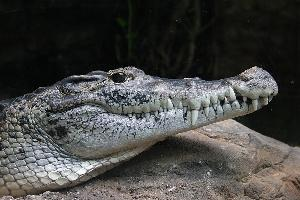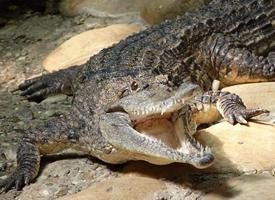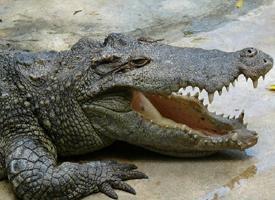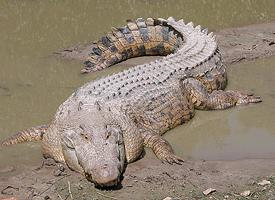
Váhy a míry
| Délka | 6 m |
|---|---|
| Hmotnost | 1 t |
Popis zvířete
The Saltwater Crocodile (Crocodylus porosus), often referred to as the "saltie," is the largest of all living reptiles, as well as the largest terrestrial and riparian predator in the world. This formidable species is found in environments ranging from the brackish and freshwater regions of eastern India and Southeast Asia to the northern parts of Australia. The Saltwater Crocodile is distinguished not only by its size but also by its broad snout, powerful jaws, and robust body, which is adeptly designed for a life spent mostly in the water.Adult male Saltwater Crocodiles are typically much larger than the females, with males regularly reaching lengths of 6 to 7 meters (about 20 to 23 feet), and some exceptional individuals exceeding 7 meters. Females are generally smaller, averaging around 3 meters (about 10 feet). The body of the Saltwater Crocodile is covered in a thick, rugged skin with large osteoderms (bony plates) providing additional protection. This skin is a dark green or brown color, with a lighter, almost yellowish underbelly, which helps to camouflage the animal in its murky aquatic environments.
The snout of the Saltwater Crocodile is broad and powerful, equipped with 64 to 68 large, conical teeth designed to grasp and hold onto prey. The jaw strength of these creatures is legendary, capable of exerting tremendous pressure, enough to crush the bones of its prey. This, combined with their explosive speed in short bursts, makes them formidable hunters.
Saltwater Crocodiles are apex predators within their habitat, feeding on a wide variety of prey. Their diet includes fish, birds, and mammals, ranging from small creatures to large animals such as wild boar, water buffalo, and occasionally even sharks. They are ambush predators, waiting patiently, often for hours or even days, for the right moment to launch a surprise attack on unsuspecting prey.
The reproductive cycle of the Saltwater Crocodile begins with the wet season when females lay 40 to 60 eggs in a nest made of vegetation. The temperature within the nest determines the sex of the offspring, a phenomenon known as temperature-dependent sex determination. The female guards the nest vigorously until the eggs hatch, which is about 90 days. Once hatched, the young crocodiles are vulnerable and receive some protection from their mother, but still face a high mortality rate from predators and cannibalistic adult crocodiles.
Saltwater Crocodiles are highly territorial animals, especially males, who defend their stretch of river or coast against intruders. Their territories can be vast, encompassing significant stretches of water bodies. These crocodiles are also known for their remarkable ability to travel long distances by sea, which has enabled their wide distribution across islands and different landmasses.
Despite their fearsome reputation, Saltwater Crocodiles have faced threats from human activities, including habitat destruction, hunting for their skin, and being killed out of fear or for protection of livestock. Conservation efforts and legal protection have allowed their numbers to rebound in some areas, but they remain listed as Least Concern by the IUCN, reflecting the species' overall stable population but also highlighting the need for ongoing conservation measures to ensure their continued survival in the wild.
Mapa výskytu
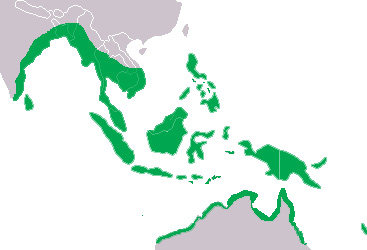
Podobná zvířata
Nové fotografie zvířat
Top 10 zvířat
- Chinese water dragon (Physignathus cocincinus)
- Galápagos tortoise (Geochelone nigra complex)
- Dolphin gull (Leucophaeus scoresbii)
- Japanese macaque (Macaca fuscata)
- Colombian red howler (Alouatta seniculus)
- Sea urchins (Echinoidea)
- Moustached guenon (Cercopithecus cephus)
- Diana monkey (Cercopithecus diana)
- Common reed warbler (Acrocephalus scirpaceus)
- Common house mosquito (Culex pipiens)
